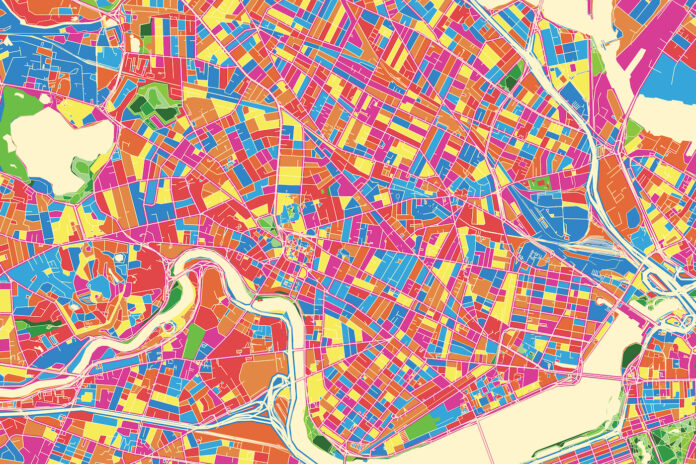Merriam-Webster defines the word, unique, as being without a like or equal. Meanwhile, Google describes the term as ” remarkable, special, or unusual.” Regardless of the definition used, the Massachusetts cannabis market fits all descriptions of the six-letter word. Within the last two years, consumers and retailers have developed dissimilar trends from legacy markets like California and Colorado and emerging markets like Florida and New Jersey. As the Massachusetts market continues to emerge, it will be imperative for retailers and other industry leaders to understand the novel trends that make the Bay State cannabis market unique.
Growth of cannabis in Massachusetts
First and foremost, it is essential to gain an understanding of the marketplace makeup that exists in the Bay State. Compared to the aforementioned cannabis markets in California and Colorado, Massachusetts is highly vertically integrated. As a result, the state witnesses large amounts of brand consolidation. High levels of integration paired with large amounts of brand consolidation have paved the way for the prevalence of “House Brands.” Compared to all other brands, “House Brands” make up 30 percent or more of the market share in the following product categories: flower, pre-rolls, vapor pens and concentrates. Overall, the state’s top 10 brands occupy 66.9 percent of the market. In contrast, the top ten brands in Colorado, Nevada, Michigan, California, Oregon, and Washington occupy less than 50 percent of the market. Massachusetts may differ from other states in this aspect, but this model has existed as the state’s marketplace grows at an eye-catching pace.
Massachusetts is home to the seventh largest cannabis market in the U.S. this year and the second largest on the East Coast. Producing nearly $1 billion in sales through August, the Bay State ranks above Washington and Oregon while sitting slightly below Colorado. Dissimilar from many of its counterparts, Massachusetts has experienced positive year-over-year growth during the summer. For example, Massachusetts recorded $132 million in sales during July, which is a 4 percent increase from July 2021.
Identifying consumer trends in Massachusetts
Sales across the state continue to rise, but the purchasing trends of consumers tend to be different than those in other areas of the country. Similar to many other states, the top five product categories in Massachusetts are concentrates, flower, vapor pens, edibles, and pre-rolls. At 40.6 percent, the market share of flower products in Massachusetts is comparable to that of other U.S. markets. However, the market share of vapor pens is more than 17 percent lower than in other U.S. markets. Also, the market share of concentrates in Massachusetts is 68.8 percent lower than in other U.S. markets. In contrast, the market shares of pre-rolls and edibles in Massachusetts are 38.8 percent and 17.3 percent higher, respectively, than in other U.S. markets. Furthermore, the market shares of the next four product categories also differ noticeably from other U.S. markets. The market share of capsules, beverages, tinctures, and sublinguals in Massachusetts is at least 16 percent higher than in other U.S. markets. Meanwhile, topicals make up 90.9 percent less of the market share in the Bay State than in other areas of the United States.
Differences in market share between Massachusetts and other U.S. states are not the only way Massachusetts is unique. Additional data offer further insight into the customer demographic groups across Massachusetts. Across younger demographics, female Generation Z and Millennial customers represent a disproportionately higher portion of sales when compared to other markets. In contrast, male Generation Z and Millenial customers in Massachusetts represent a disproportionately lower amount of sales compared to other areas of the U.S. Among Generation X and Baby Boomer groups, customers in Massachusetts, regardless of gender or sex, generate a proportion of sales comparable to or higher than in other U.S. markets.
Conclusion
Not only has Massachusetts generated more sales than many other states across the U.S., but it has also cemented itself as the top cannabis marketplace in the northeast this year. Within this unique state, high levels of vertical integration and brand consolidation have allowed the top ten brands to make up nearly 70 percent of the market. Digging deeper, it becomes even more important to learn female consumers in Massachusetts represent a disproportionate amount of the marketplace. At the same time, Generation X and Baby Boomers make their presence felt. As this market continues to evolve, it will be imperative for companies to monitor the consumer trends and vertical integration patterns that make the Bay State unique. If you’d like to learn more about the Massachusetts cannabis marketplace, please read the full report here.










[…] regulators, operators, and observers across the Old Bay State are still developing an idea of how the market will mature, but data collected from the end of June through late July offers several valuable insights into […]